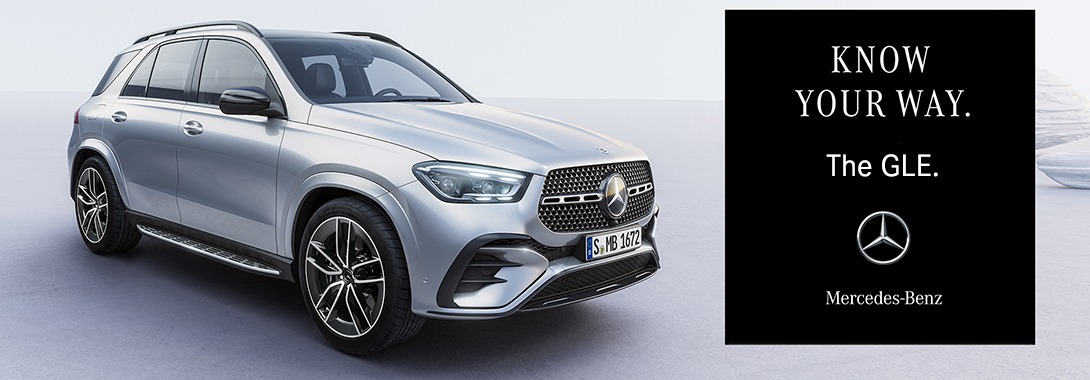
Record-breaking figure for Audi in November
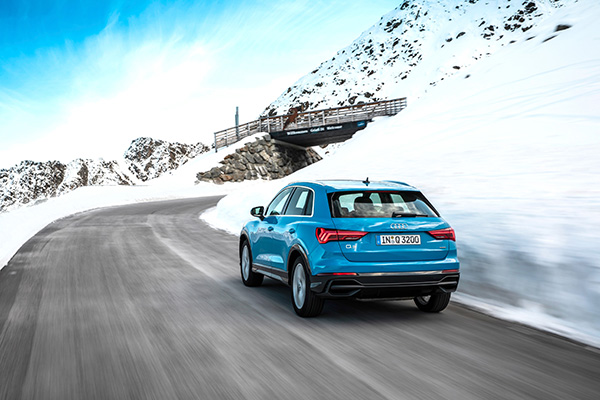
RCanada and U.S. generated strong demands for the new Audi Q3 which will be available for sale in Brunei soon
AUDI AG delivered around 163,350 cars (+23.1%) to customers worldwide last month, more than ever before in a single month of November. Apart from the strong growth in Europe (+33.0%), which is still due to prior-year effects, record figures in the core regions of North America (+17.3%) and China (+16.8%) contributed to the new record-breaking figure. In turn, the company also exceeded the prior-year cumulative figures for the first time since the start of the year: From January through November the brand with the Four Rings delivered around 1,669,600 premium automobiles (+0.7%).
“Our model initiative is gaining traction globally at the year-end,” says Hildegard Wortmann, Member of the Board of Management for Sales and Marketing at AUDI AG. “North America has been reaping the benefits of the full availability of the new Audi Q3 for the past few months; the two electric models, the Audi e-tron and Audi Q2 L e-tron*, as well as the Audi Q8 bolstered our portfolio in November in China. Despite the increasingly difficult environment, we therefore still expect our deliveries to customers to perform robustly and to see slight growth for 2019 as a whole.”
Deliveries in Europe increased to around 707,650 cars since January, a year-on-year increase of 2.2 percent. The sharp increase of 33.0 percent to around 58,300 units in November is once again also down to prior-year effects associated with the WLTP switchover and model changeovers. In Germany, Audi handed over 19,526 cars to customers in November, an increase of 24.3 percent. Deliveries rose 4.1 percent to 253,443 cars since January. The Audi Q3 (23,303 cars, +67.7%), the Audi A6 (41,899, +18.4%) and the Audi Q8 (5,751 cars, +131.2%) contributed positively to growth in the domestic market.
The North America region saw deliveries increase in November to a new record-breaking figure of 25,230 cars (+17.3%), with around 241,100 vehicles delivered to customers (-3.3%) since the start of the year. In the United States, deliveries increased by 20.7 percent to 20,618 cars in November. Audi delivered 198,261 cars in the United States since January, almost on a par with the prior-year figure (-1.1%). Deliveries in Canada were once again up in November (3,416 cars, +4.4%), with the company delivering 31,829 cars (-10.0%) since the start of the year. Both countries generated strong demand in November for the new Audi Q3, which went on sale in July, (USA: 2,497 cars, +256.7%; Canada: 929 cars; +231.8%) along with the new Audi Q8, which remains market leader in its segment.
In China, 67,402 cars delivered (+16.8%) in November set a new record-breaking figure. Cumulative deliveries were up 3.5 percent to 618,596 units. Growth was driven in part by the high demand for the A6 L (16,559 cars; +9.3%). The Audi Q2 L was also introduced in China as an all-electric model in November. Apart from the locally produced Audi Q2 L e-tron, the Audi e-tron also went on sale in China in the middle of last month.
Audi SQ5
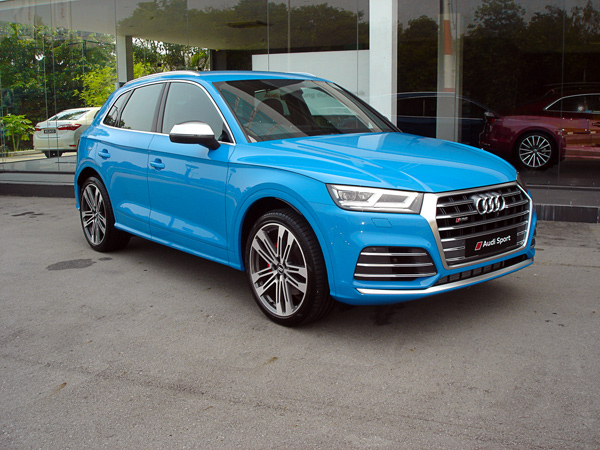
The enhanced version of the Audi Q5 – the SQ5
The popular Q5 is Audi Brunei’s top selling mid-sized SUV and now a performance enhanced version is available in the SQ5.
The 3.0 litre V6 TFSI high-performance engine with 260 kW hits the 100 km/h mark after a mere 5.4 seconds. Accompanied by the striking sound of the S-specific exhaust system with dual-branch twin tailpipe look. Underpinned by the turbocharger for impressive driving dynamics. Thanks to the quattro drive with self-locking center differential and sports suspension with damper control, the SQ5 is in top form even on bends and uneven roads.
Like every S model from Audi, the SQ5 comes standard with quattro permanent all-wheel drive. In normal driving conditions, its self-locking center differential distributes torque between the front and rear axle in a 40:60 ratio. When slip is detected, the majority of the power is directed to the axle with the better traction. Depending on the driving situation, a maximum of 70 percent can flow to the front or 85 percent to the rear.
The new Audi SQ5 offers a broad portfolio of driver assistance systems. The predictive efficiency assistant provides specific tips to help the driver save fuel. Audi side assist also enhance safety in everyday driving. The same applies to the pre sense systems; Audi pre sense rear comes as standard.
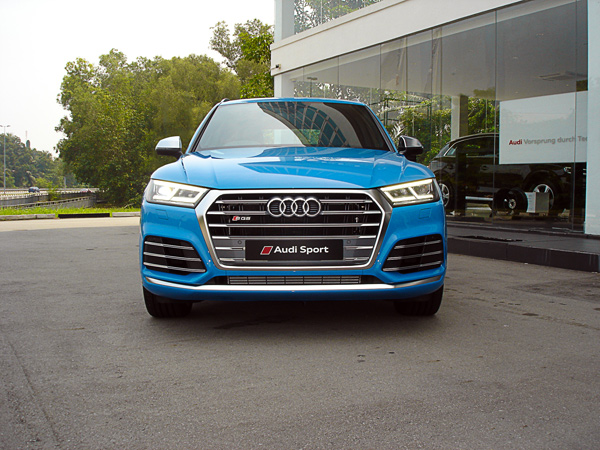
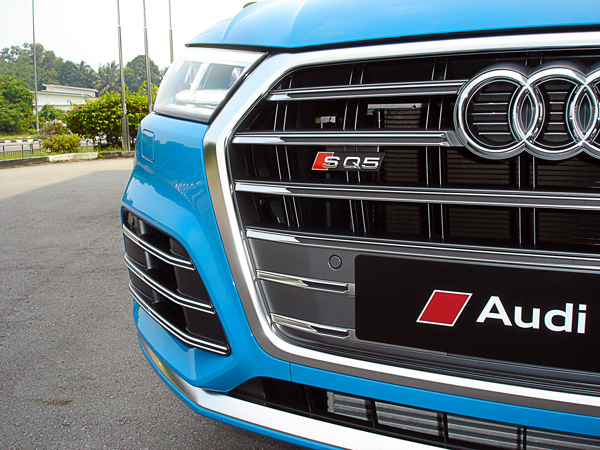
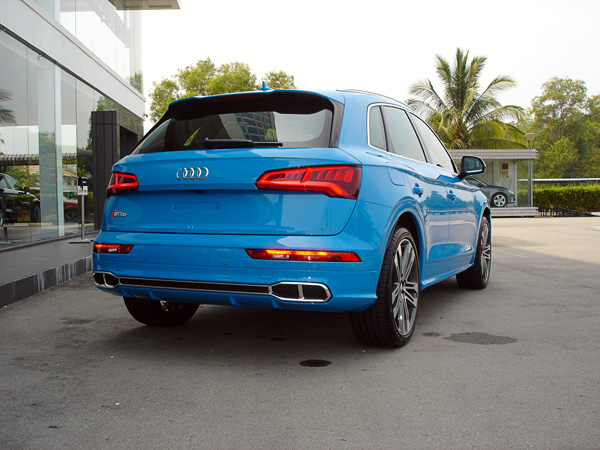
Numerous exterior design details hint at the sporty character of the Audi SQ5. The bold bumpers feature strongly contoured air inlets up front and a diffuser insert with a honeycomb grille at the rear. The Singleframe grille features double aluminium slats and contrasting trim elements in twilight gray matt. The S logo with red rhombus is used in numerous locations to set additional accents.
The headlights and rear lights of the Audi SQ5 come standard in LED technology; the dynamic turn signals at the front and rear send unmistakable signals. The exterior mirror housings and the clasp on the diffuser sport a shining, aluminium-look finish. Door trim strips in the body color underscore the sportiness.
Standard equipment for Brunei includes 21-inch cast aluminium wheels in a 5-twin-spoke V design, Matrix LED headlights and suspension with S-specific damper control. The eight-speed tiptronic transmission, quattro permanent all-wheel drive, sport seats in leather/Alcantara and a three-spoke, leather-covered multifunction steering wheel are also standard equipment. B&O Premium is also standard.
The All new Audi Q8 3.0
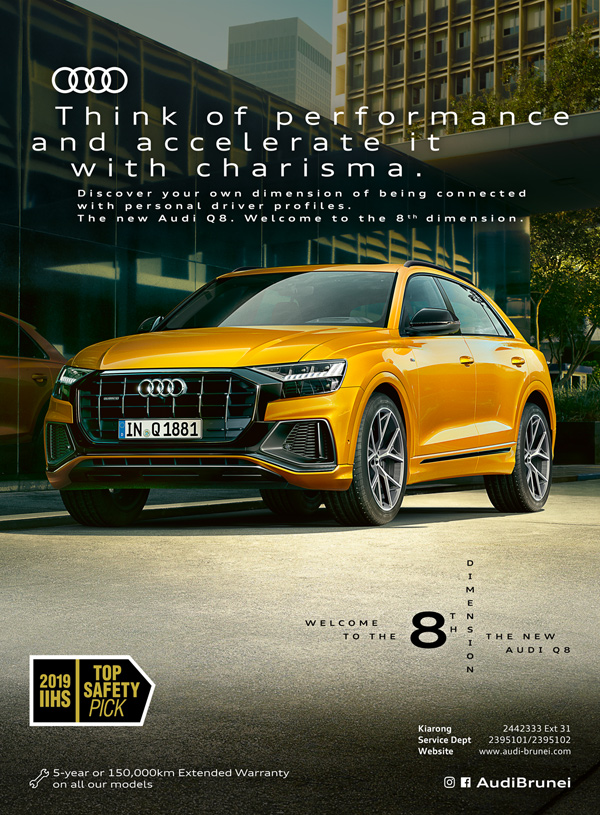
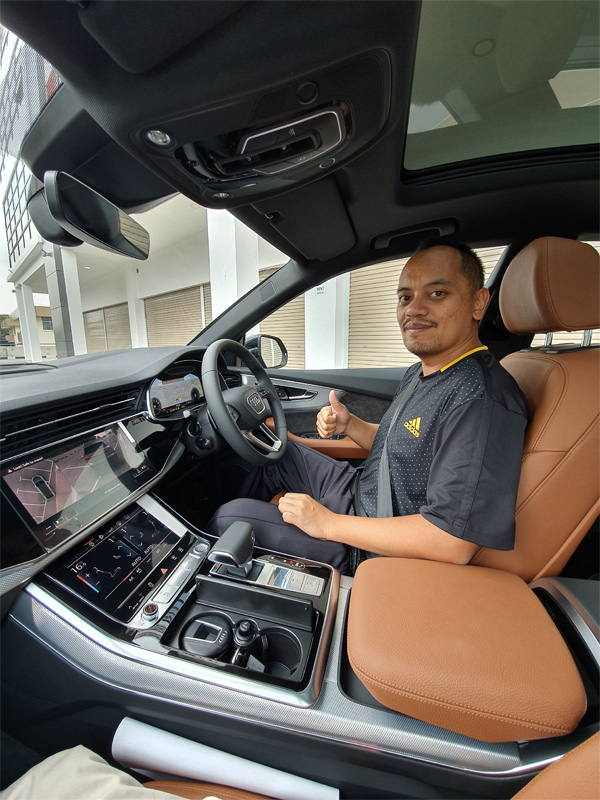
It was a good short, test drive of the newest Audi Q8 3.0 and hoping more test drive in the future
Leading Audi’s new design and technologies
The new Audi Q8 3.0 TFSI V6 quattro tiptronic 340hp/500Nm
The new Audi Q8 delivers a new interpretation of a large four-door SUV coupé with its striking design and excellent adaptability. It constitutes the new full-size class in the brand’s product portfolio. With their extensive package of innovative technologies, the full-size models once again underscore “Vorsprung durch Technik” and offer customers a great deal of utility value.
With the permanent quattro all-wheel drive and a ground clearance of up to 254 millimetres (10.0 in), the SUV coupe can continue when paved roads end. The Audi Q8, which is manufactured at the Bratislava plant, is now available for Brunei.
Mild hybrid – 100 % broad-based electrification
Audi’s full-size class is also innovative in terms of engines. To enhance comfort and efficiency, the Audi Q8 is fitted standard with mild hybrid technology (MHEV, mild hybrid electric vehicles). The Audi engineers have linked the MHEV drive to the vehicle’s sensors, thus ensuring anticipatory, predictive control along with enhanced efficiency.
The six cylinder engine uses a 48V MHEV system. At the heart of the 48V system is a belt alternator starter, which instantly and smoothly restarts the combustion engine. At the same time, it extends the start-stop system to up to 22 km/h (13.7 mph).
Between 55 and 160 km/h (34.2 – 99.4 mph) the full-size models can coast fuel-efficiently with the combustion engine shut off. The drive management decides on the suitable strategy. The lithium-ion battery housed in the rear stores the recovered energy and passes this onto auxiliary consumers such as the air conditioning or the oil pump in the transmission.
In real-world driving, fuel savings of up to 0.7 litres (0.2 US gal) are possible.
Versatile, sporty, elegant: the dimensional and space concept
With its large luggage compartment and generously sized storage compartments and tray areas, the Q8 is ideal for longer journeys. The luggage compartment of the SUV holds 605 litres (21.4 cu ft) as a standard, which increases to 1,755 litres (62 cu ft) with the rear backrests folded down. Two golf bags can easily fit in crosswise. The tailgate can be opened and closed electrically as standard, with a foot gesture option available on request. The electric luggage compartment cover is another convenience option. Guided on rails, it automatically retracts when the tailgate is opened and is extended again upon closing.
A new face for the Q family: the exterior design
With the imposing Singleframe in octagonal design, the Audi Q8 is the new face of the Q family. Six vertical chrome fins make the radiator grille appear upright and solid. A wide, optionally colored mask connects the Singleframe to the distinctive headlights. The spoiler, which is pulled towards the front, and the large, strongly contoured air intakes additionally highlight the aggressive look.
Thanks to the frameless doors, the coupe-type roof line stretches low across the vehicle body visually, ending in a long roof spoiler. The roof line arches slightly towards the flat sloping, strong D-pillars, which are supported by wide, muscular contours – the quattro blisters, reminiscent of the original Audi quattro. The shoulder line stretches the SUV, elegantly connecting the powerful wheel housings.
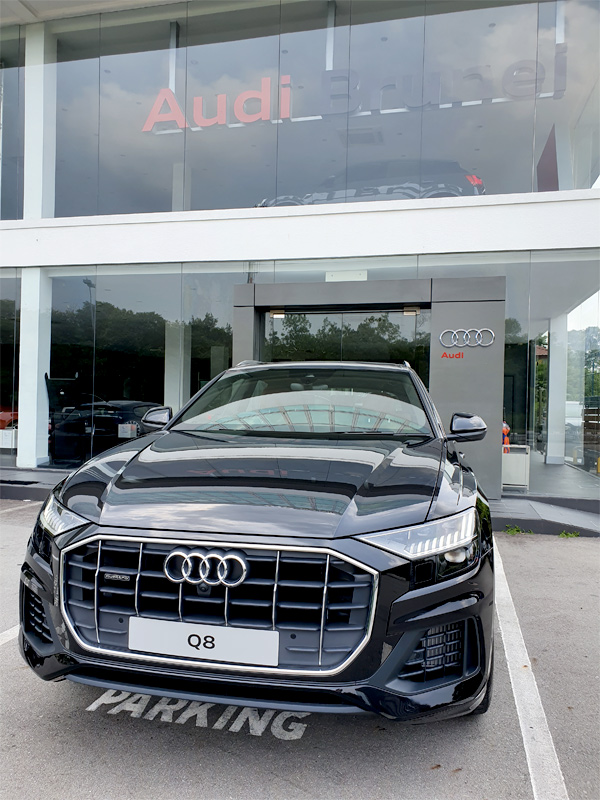
What a beaut!!
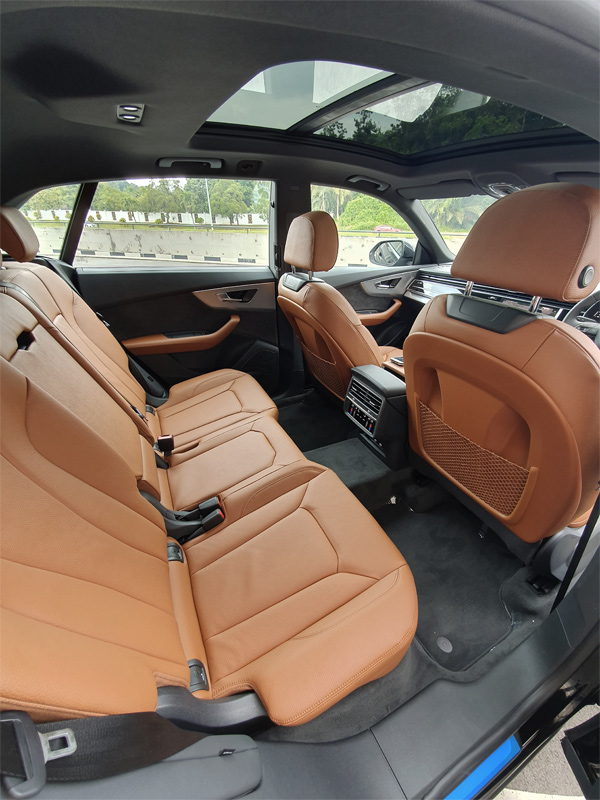
Spacious in the Audi Q8
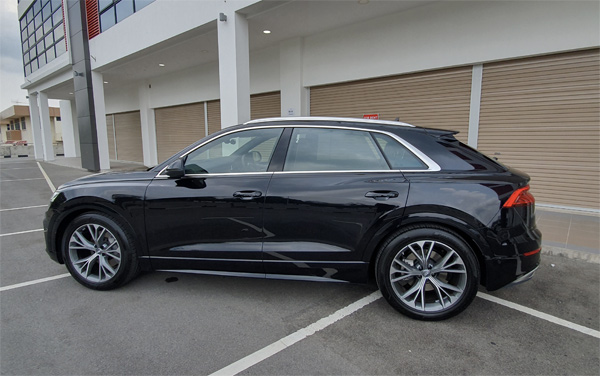
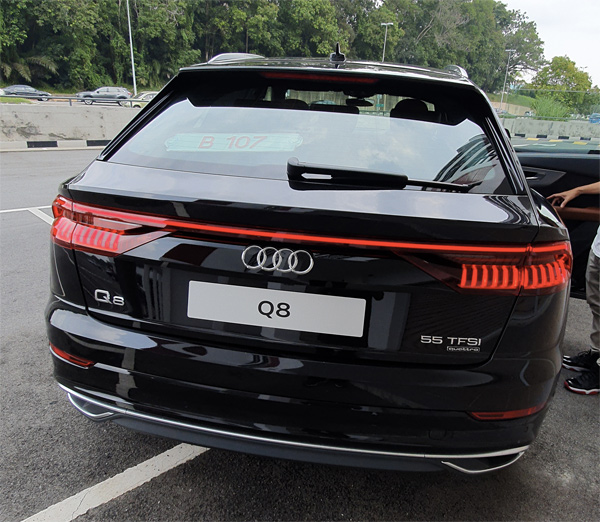
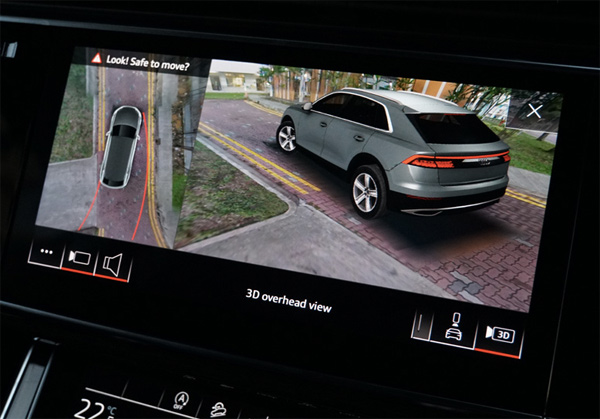
The 3D camera view. Awesome!!
Digital character: lighting technology and design
From afar, the two-part lights appear very flat. Their top part integrates the daytime running light and the low beam, among other functions. The high beam is positioned underneath, darkened and offset to the back. In the standard for Brunei HD matrix LED headlights, each consists of 24 individual LEDs.
In connection with the HD matrix LED technology, headlights and taillights do not only feature the dynamic turn signal, but are also set in scene impressively during locking and unlocking. Their harmonious interplay gives the SUV a dynamic character.
Simplicity is the new premium: the interior design
The upper MMI touch response display is the central element of the interior of the Audi Q8. With its black-panel look, it almost dissolves into a large, black surface when switched off. Simple, easy-to-understand symbols stand for the digital precision from Audi and for the high level of integration of the architecture and operation – simplicity replaces complexity. All fundamental lines originate from the large display, for example the continuous air vent strip with integrated chrome fins and an elegant aluminium-look strip.
The slender dashboard and the calm lines with a strong horizontal focus highlight the impression of width conveyed by the interior of the Audi Q8. The styling in the interior is deliberately clean and simple. All elements have a logical connection and harmonize with one another: from the “wrap around” – the large arch running from the front doors across the instrument panel – to the operating unit for the light, which is available in black-panel look and with a touch surface. All this combined gives the interior a feeling of calm.
Designed as an independent geometric body, the console of the center tunnel with its generous area visualizes the robust character of the SUV. In the dark, the contour light traces the distinctive design lines of the interior and provides backlight for the three-dimensionally lasered quattro badge above the glove compartment – an example for the love of detail at Audi.
Clear and distinct: controls and displays
The operating concept in the Audi Q8 needs almost no buttons or knobs. It focuses on two high-resolution touch displays. This allows the brand to demonstrate how it transfers its uncompromising quality claim to the digital world. The upper display with 10.1 inch screen diagonal is used for controlling the infotainment and the navigation system. The lower 8.6 inch display allows the driver to manage the heating, ventilation and air conditioning as well as comfort functions and text input. The driver’s wrist can rest comfortably on the tiptronic selector lever during operation. The MMI touch response concept allows fast and reliable operation. A confirmation click can be felt and heard when a function is selected with a finger tap. The menu structure is intuitively logical and flat like on a smartphone, including freely configurable favourites and start screens.
In addition to all this, the natural language voice control turns the Audi Q8 into an intelligent dialog partner. The system processes all questions and commands in two ways – with information stored onboard and with detailed knowledge from the cloud. Drivers can word their commands freely. The voice control can, for example, understand the sentence “I am hungry” and accordingly offer suggestions for restaurants close by.
MMI navigation plus also includes the Audi virtual cockpit. Its high-resolution 12.3 inch display can be switched between two views – classic and navigation – with the multifunction steering wheel. After market launch, the Audi virtual cockpit plus option will offer a third interface with a particularly sporty look. The head-up display, another optional feature, projects important information onto the windshield, including detailed lane guidance for navigation.
Tottenham Hotspur wins the 2019 Audi Cup

Winner Audi Cup 2019: Tottenham Hotspur FC. Getty Images.
Four top-caliber matches on two days, 31 goals in total and an electrifying spectacle for some 140,000 spectators: The sixth edition of the Audi Cup ended in a triumph for Tottenham Hotspur on Wednesday night. The English team beat the hosts 8-7 on penalties in the final. Previously, Real Madrid C.F. had defeated the team of Fenerbahçe Istanbul in the match for third place 5-3.
FC Bayern München missed out on its fourth triumph in the Audi Cup in front of a home crowd: In a dramatic final that was only decided on penalties, the guests won 8-7. The score at the end of the regular playtime had been 2-2 after Bayern had still made up a 0-2 deficit after halftime. Tottenham celebrated their first success in the high-calibre preparatory tournament in Munich. The winners’ trophy was presented by Bram Schot, Chairman of the Board of Management of AUDI AG.
In the match for third place, Real Madrid and Fenerbahçe Istanbul had previously fought a fiery duel. After the guests from Turkey had initially taken the lead, both teams kept equalizing the score up to 3-3 before the squad from Madrid ultimately won 5-3.
With a turnout of some 140,000 spectators, the Allianz Arena was sold out on both matchdays. International interest was huge as well: Television coverage of the Audi Cup was aired in nearly 200 countries of the world. The fans not only got to watch top-class football but also a tremendous show. On both days, 220 apprentices of AUDI AG openend the games with a choreographed performance and for the closing ceremony, the stadium was electrically charged with a spectacular light show: perfectly fitting “Electric has gone Audi,” the slogan with which Audi promoted the e-tron, the brand’s first all-electric model, in conjunction with the tournament.
On the final day, two players were again recognized for the “Most Electrifying Moment” of a match. Real Madrid’s striker Karim Benzema was awarded the trophy featuring a sophisticated design for his headed goal in the “small final” for third place. In the last match of the tournament, it was Christian Eriksen from Tottenham whose goal that scored the 2-0 result was rewarded with the trophy.
The Audi Cup was the final acid test before the teams start fighting in earnest in the respective competitions of their countries. FC Bayern München will contest the Supercup against Borussia Dortmund as early as next Saturday night. Tottenham, their rivals in the final, will start to the new Premier League season with a home match a week later, on August 10.
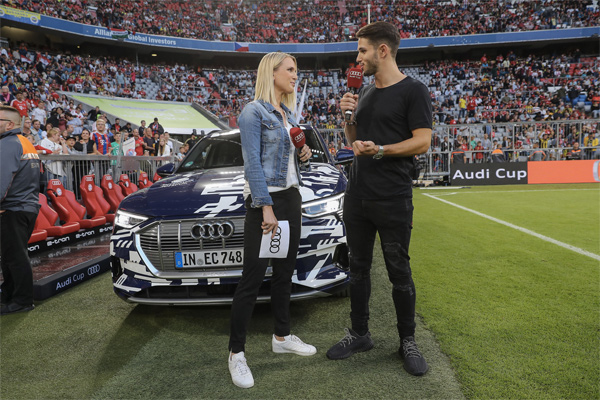
Daniel Abt, Formula E driver. Image source: stefanboesl.de

Bram Schot, Chairman of the Board of Management of AUDI AG, with 220 trainees of AUDI AG, who presented the opening ceremony. Getty Images.
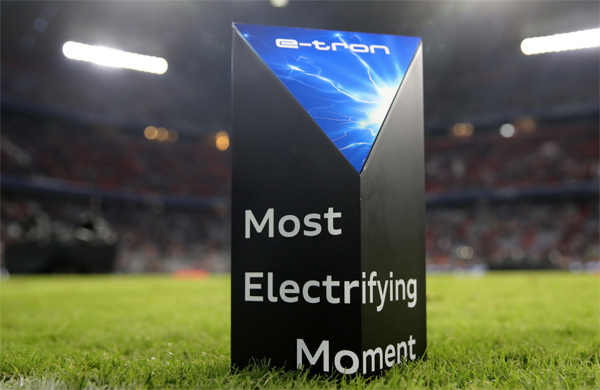
Trophy for the “Most Electrifying Moment” for the Audi Cup 2019. Getty Images.
Audi A4 Black Edition
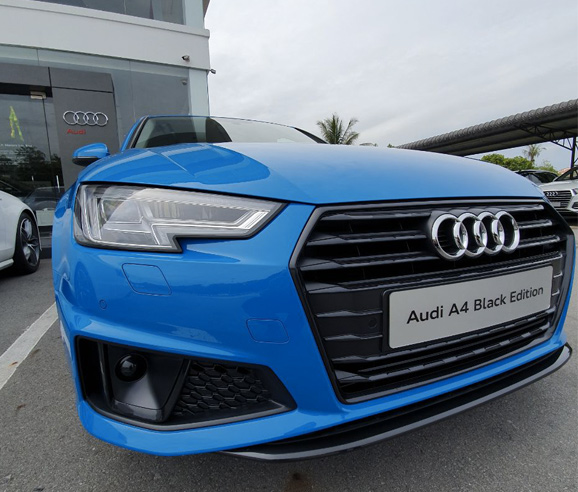
The 1.4 Audi A4 Black Edition is available for test drive
Yesterday I had the privilege to have a short test drive of the sportier look of the Audi A4 Sedan Black Edition. Yes, yes. The colour of the Audi that I test drove was in blue but the Black Edition was referring to the new Black styling package where the front radiator grille, the side sill trims, side air inlet and front spoiler and also the sporty rear spoiler are in gloss black finish. It does look slicker in the gloss black finish and matches the royal blue colour of the Audi A4 sedan. Though it’s not an S Line version but you will enjoy the S Line exterior finishing touch to give the 1.4 Audi A4 a sportier feel.
The Audi A4 that I test drove is the 1.4 litre spec. The features inside have been upgraded where you will appreciate the inlays has a piano black finish to give a classier feel. The base features for the A4 already includes such premium equipment such as Drive Select, Virtual Cockpit digital display and Navigation plus with additional Side Assist blind spot detector.
The 1.4 Audi A4 comes with 18” exclusive Audi Sport cast aluminium wheels in 10-y-spoke design in gloss black.
The price is quite reasonable if you ask me. The driving experience, though a short one, is still a great one (Wish I could spend more time with it to get the full experience). Despite being a 1.4 litre engine, the horsepower is 150hp and you can feel the difference when you step on the accelerator.
Do test drive the 1.4 Audi A4 Black Edition and get the feel of it.
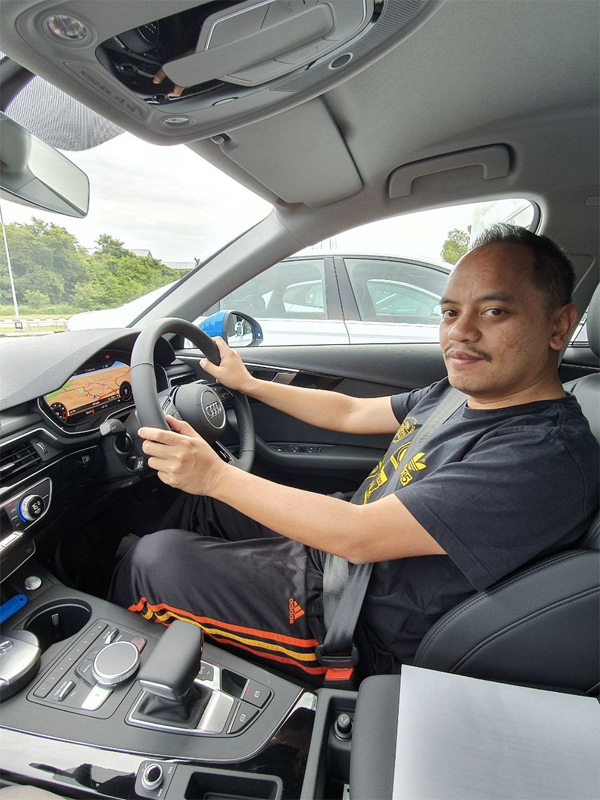
A quick test drive on the 1.4 Audi A4 Black Edition but I craved for more
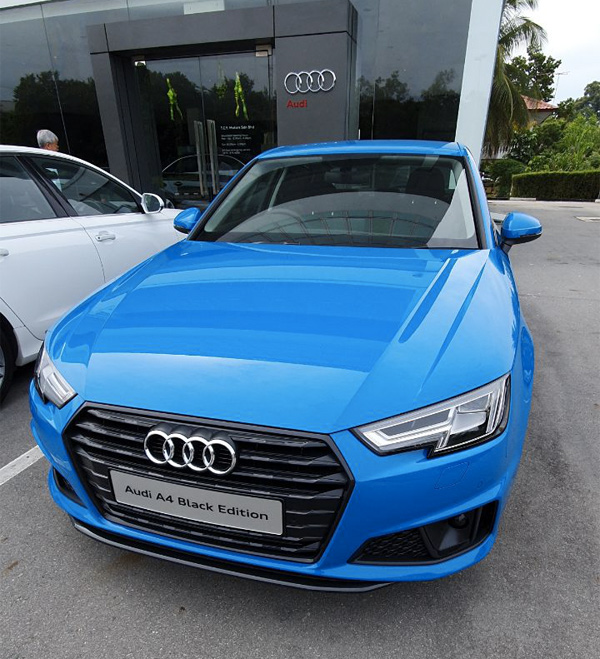
It does look sportier with the gloss black finish on the grille
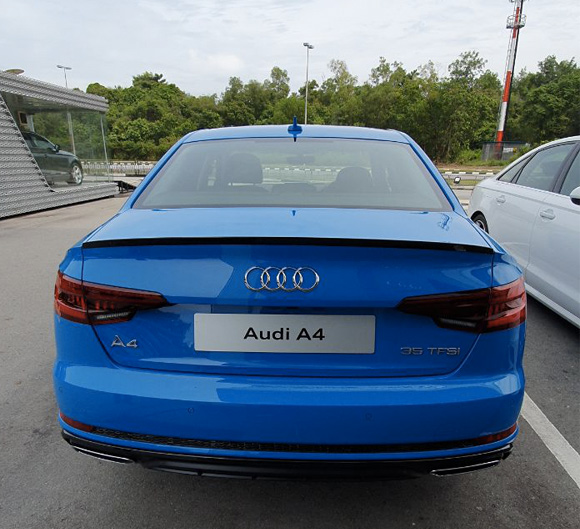
The sporty rear spoiler is also in gloss black
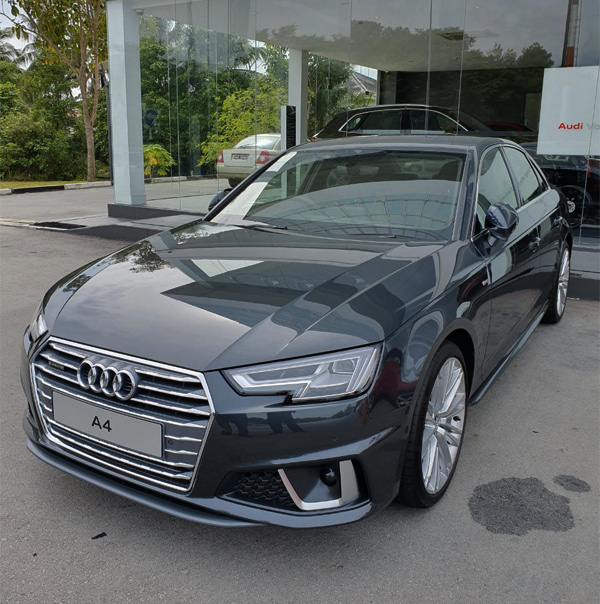
This is the previous base model of the Audi A4 Sedan. You can tell the difference in the grille and such.
Now the quattro (high spec) version of the Audi A4 Black Edition
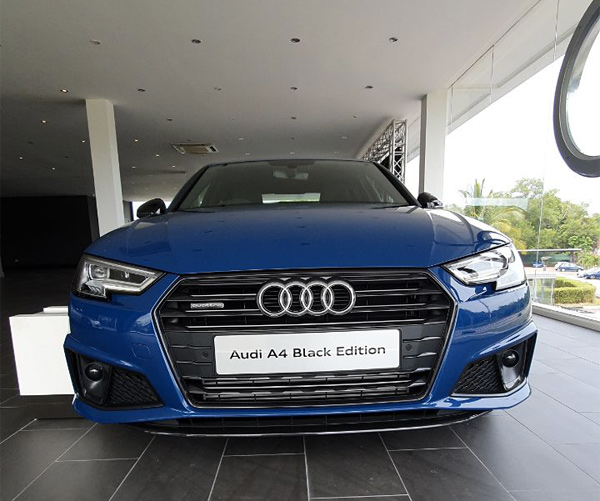
This look similar to the 1.4 Audi A4 Black Edition. Just that this is the high spec edition, the quattro Audi A4
If you want much power hungry version of the Black Edition, then you can go for the 45 TFSI Audi A4 Black Edition (quattro). This is the higher spec with a horsepower of 252hp, enhancing the driving experience even more. Unfortunately, no drive test edition for this one.
The pedals and footrest are made of stainless steel. The seats themselves are sporty and in leather. The rims are slightly bigger, 19” exclusive Audi Sport 5-arm-rotor matte titanium look. Let’s not forget, the driver and passenger will enjoy the Bang & Olufsen 3D sound system too.
All Audis in Brunei come with 5-year or 150.000km (whichever comes first) Extended Warranty. Do visit Audi Showroom in Kiarong to find out more. Follow them on @audibrunei on instagram and Facebook too.
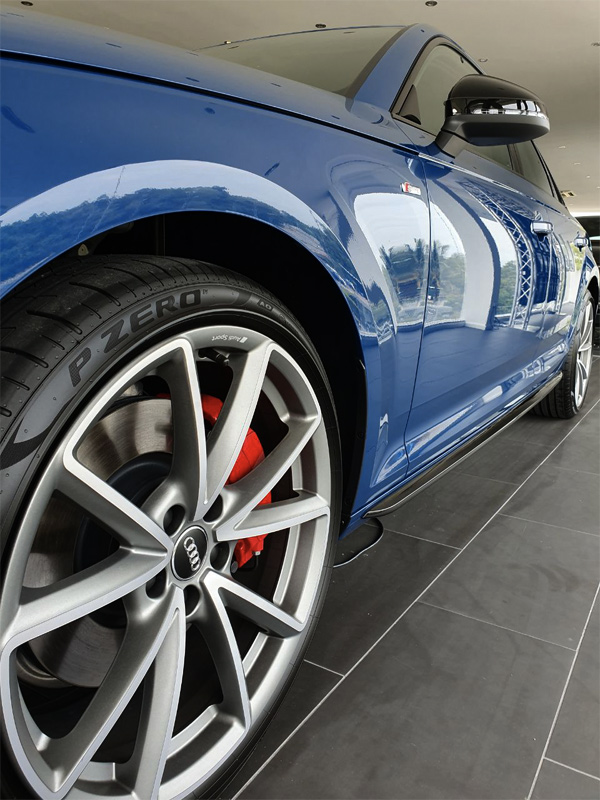
Check out the 19” rims complemented by brake callipers in red
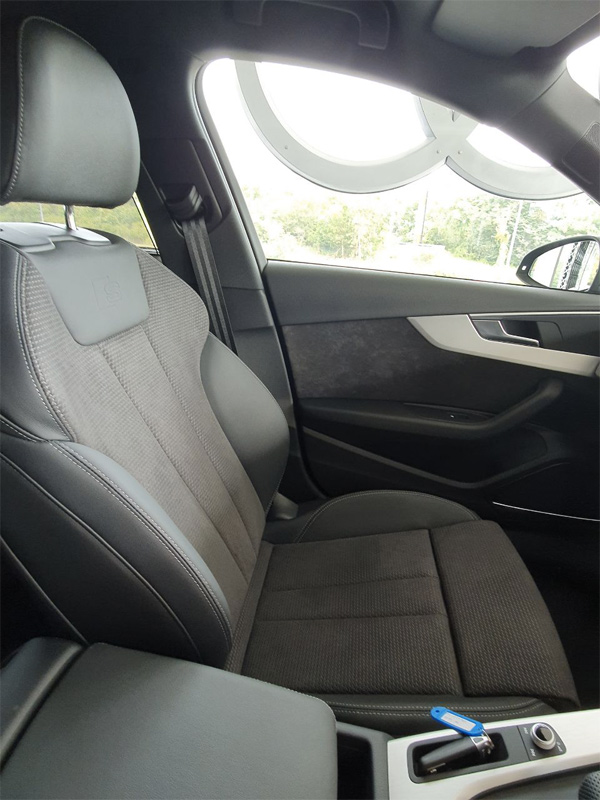
In the high spec, you will enjoy the leather finish on the seats
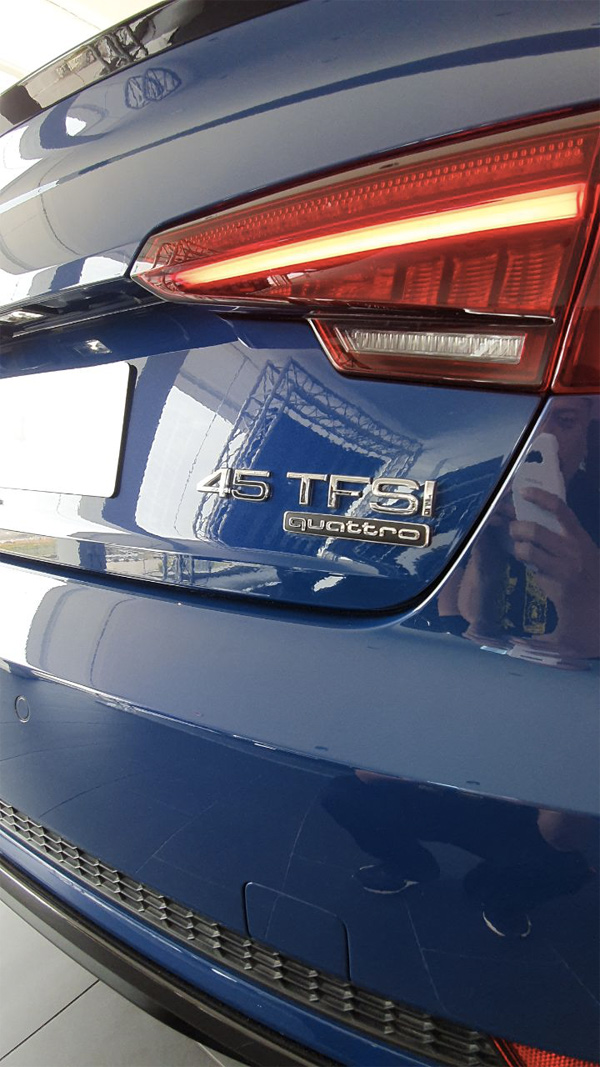
You will get use to the new numbering system by Audi. The 45 stands for a 2.0 litre engine.
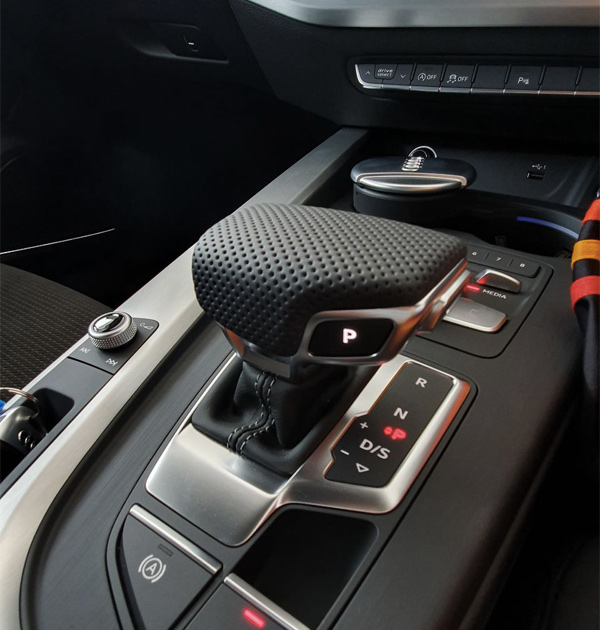
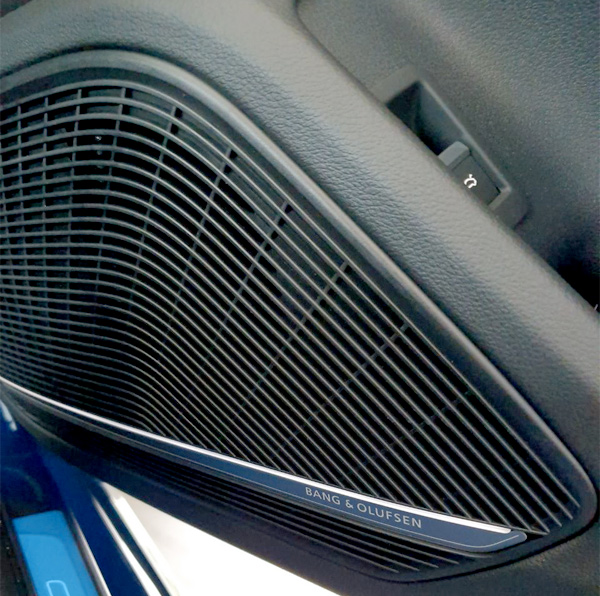
In the high spec, you will also enjoy the high quality speakers from Bang & Olufsen
Audi Sport wins 24 Hours of Nürburgring for the fifth time
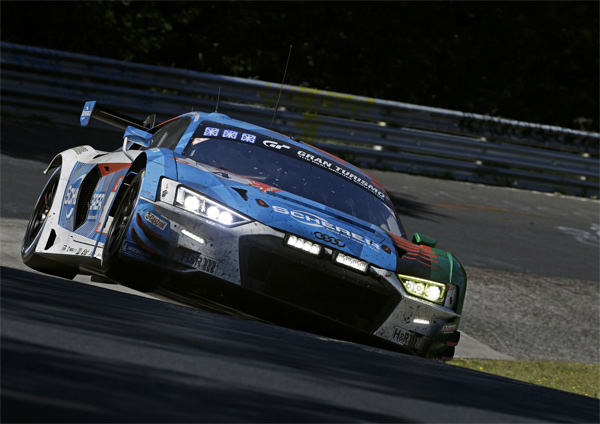
Audi R8 LMS #4 (Audi Sport Team Phoenix), Pierre Kaffer/Frank Stippler/Dries Vanthoor/Frédéric Vervisch. Image by Ferdi Kräling Motorsport-Bild GmbH.
The 47th running of the 24 Hours of Nürburgring was a thriller up until the last second: Following a turbulent final stage, the number 4 Audi R8 LMS won the battle with last year’s winning team from Porsche with a one-lap advantage. For Audi Sport Team Phoenix based at the Nürburgring, this marked the third victory with Audi and the fifth in the team’s 20-year history.
“Sincere congratulations to the whole squad,” said Chris Reinke, Head of Audi Sport customer racing. “We won with a unique combination of diverse factors this time. The field was not fully balanced and our rivals drove better lap times across long distances. But the impeccable and strong driving performance saved us from penalties. The new evolution of the Audi R8 LMS was running perfectly and Ernst Moser’s team once again showed that it’s top-class also in the international comparison.” The team from the Eifel had won its home round with Audi back in 2012 and 2014 and previously scored two other victories.
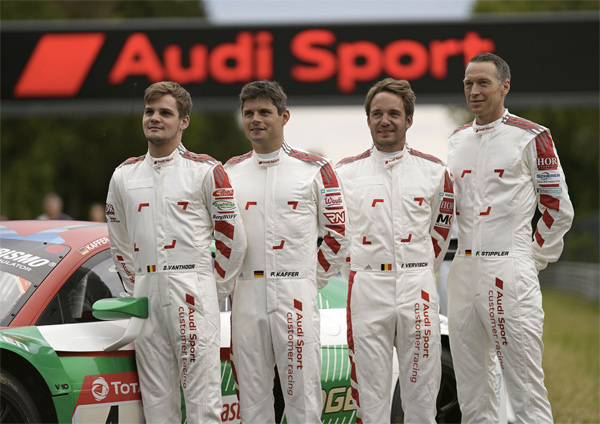
Dries Vanthoor, Pierre Kaffer, Frédéric Vervisch, Frank Stippler. Image by Ferdi Kräling Motorsport-Bild GmbH.
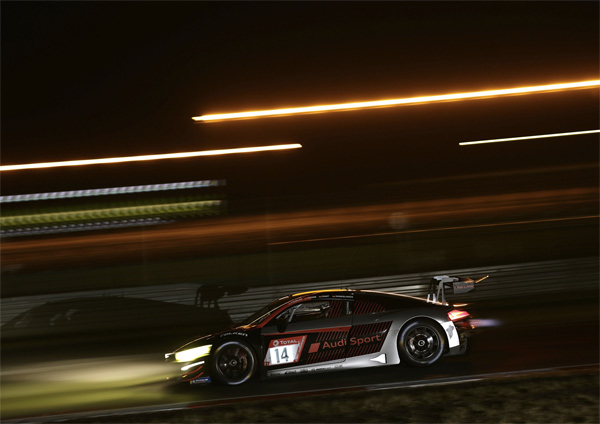
Audi R8 LMS #14 (Audi Sport Team Car Collection), Christopher Haase/Marcel Fässler/René Rast/Markus Winkelhock. Image by Ferdi Kräling Motorsport-Bild GmbH.
While three Audi R8 LMS cars were running within the group of the top ten for long stretches of the racing distance, car number 4 only took the lead for the first time on lap 142 when the Porsche that had been leading for a long time was handed a time penalty. At that time, a second Audi Sport Team had chances for victory as well – Audi Sport Team Land that was victorious for Audi at the Nürburgring in 2017. But two hours before the end of the race, the Audi R8 LMS from Wolfgang Land’s squad with drivers Christopher Haase/Kelvin van der Linde/Christopher Mies/René Rast retired after a puncture. Hence all hopes were pinned on the four Audi Sport drivers Pierre Kaffer/Frank Stippler/Dries Vanthoor/Frédéric Vervisch, who masterfully did their job. For the merely 21-year-old Belgian driver Dries Vanthoor, who drove the final stint, this marked the first Nürburgring victory, just like for Pierre Kaffer, who grew up in the Eifel. Frédéric Vervisch won the Nürburgring 24 Hours for the first time too. The Belgian was previously involved in the historic first 24-hour victory of the latest evolution of the Audi R8 LMS in Dubai in January. Frank Stippler, who hails from Cologne, won the iconic event as far back as in 2012 with Audi. In total, the GT3 race cars from Audi Sport customer racing have clinched as many as 13 overall victories in 24-hour races worldwide since 2009.
Audi Sport Team Car Collection with Christopher Haase/Marcel Fässler/René Rast/Markus Winkelhock lost a possible podium finish shortly before the end due to a time penalty and achieved fourth position. The privately fielded Audi R8 LMS from Phoenix Racing with Jeroen Bleekemolen/Vincent Kolb/Kim-Luis Schramm/Frank Stippler crossed the finish line in eighth place. Gentleman drivers Stefan Aust/Oliver Bender/Christian Bollrath/Jean-Louis Hertenstein claimed a remarkable 16th spot overall with Team Car Collection Motorsport.
Several Audi customer teams clinched additional trophies at the Nürburgring. Team Giti Tire Motorsport by RaceIng with Rahel Frey/Bernhard Henzel/Pavel Lefterov/Frank Schmickler in an Audi R8 LMS won the SP8 class ahead of the Audi R8 LMS GT4 from Team Giti Tire Motorsport by WS Racing with the Asian driver crew of Xiaole He/Fei Li/Yat Wong/Andy Yan. Team Bonk Motorsport scored second place in the SP 3T class in an Audi RS 3 LMS – the best TCR race car in this class. In 2017, the squad based in Münster had claimed two podium finishes with this model and another podium in 2018. Fourth position went to the Audi RS 3 LMS from Team Avia Sorg Rennsport. As a result, nine of the ten race cars from Audi Sport customer racing finished the event.
Meet Tony Stark’s new ride in Avengers 4

Meet Tony Stark’s new ride in Avengers 4
This is the Audi e-tron GT and the third e-tron, unveiled at last year’s LA Motor Show. Yes it is all electric and news is the volume-production counterpart is set to follow in around two years.
A flat-floor architecture that provides for exciting proportions and a low center of gravity. 434 kW (590 metric horsepower) ensures performance fit for a sports car. The torque is transferred to the wheels via the quattro permanent all-wheel drive with torque vectoring, as you would expect for such a dynamic Audi. The performance subsidiary Audi Sport GmbH has been tasked to subsequently transforming the car into a volume-production model.
Mobility for Megacities: Audi AI:ME
At Auto Shanghai 2019, Audi is introducing a visionary mobility concept for the megacities of the future: The showcar, known as the Audi AI:ME, offers compact dimensions, a spacious, futuristic interior, and the ability to drive autonomously at level 4. This allows the occupants to do what they like with their time on board. The Audi AI:ME offers a broad range of high-tech features for communication, entertainment, or simply relaxation.
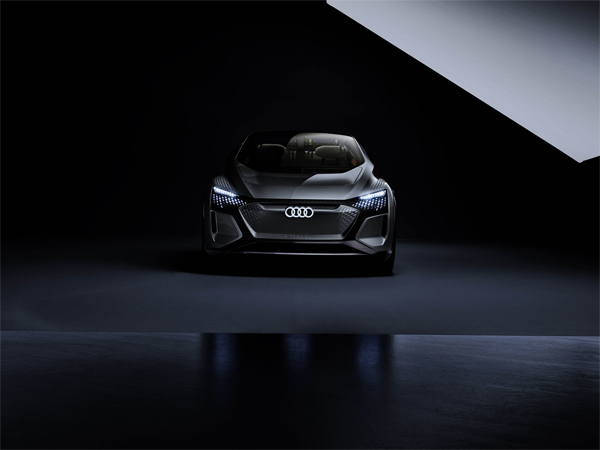
The body line of the Audi AI:ME demonstrates how emotion and spatial economy can form a perfect synthesis in an electrically driven compact car. There is a reason that the name AI:ME emphasizes the relation to the Audi AIcon, the study of automated long-distance operation introduced in 2017. The affinity of the body line and the concept of these two cars will become evident in Shanghai, as the AIcon will flank the world premiere on the stage of the Audi booth at Auto Shanghai 2019.
Compact architecture, electric drive: The concept
With an exterior length of 4.30 meters (14.1 ft) and a width of 1,90 meters (6.2 ft), the Audi AI:ME takes up as much traffic space as a present-day compact car. However, the wheelbase of 2.77 meters (3 ft) and the height of 1.52 meters (5 ft) indicate interior dimensions that are more likely to be found in the next higher class at least. This is made possible by the architecture of the electric drive. It allows for short overhangs and a large-volume interior without a propeller shaft tunnel. The drive unit is positioned on the rear axle and mobilizes 125 kW (170 metric hp).
For the occupants, the compact drive package offers a maximum amount of objectively available space, spatial comfort, and a great deal of variability. The Audi AI:ME is designed as a 2 plus-x-seater. Its layout relies on a variety of configurations for seat positions and stowage space. While only the individual seats at the front will be used during most journeys, the car offers space for up to four people in the front and on the rear bench if necessary.
Audi AI:On our way to automated mobility
Audi AI:ME and Audi AIcon: two concept cars whose very names refer to the new, two-letter abbreviation under which Audi is bundling an entire cluster of innovative mobility technologies. Audi AI is the cipher for a variety of electronic systems that relieve strain on drivers and simultaneously offer them new possibilities to use the time spent in the car. To this end, Audi AI also uses strategies and technologies from the field of artificial intelligence and machine learning. Audi AI also combines vehicle intelligence, which makes automated driving possible in the first place, and interaction intelligence, which turns the vehicle into the occupants’ partner. The name of the Audi AI:ME thus already makes the connection between AI and the users themselves.Audi AI systems are capable of learning and thinking, while also being proactive and personal. Thanks to Audi AI, models bearing the four rings will be both intelligent and empathetic in the future. They will be able to continually interact with their surroundings and passengers, and thus adapt themselves in a better way than ever before to the requirements of those on board.
Automated driving at level 4: Relax while gliding through the city
What is long established in rail transportation and even aviation is at the threshold of a breakthrough in automotive transportation—automated driving. The Audi AI:ME is designed for use in the city and for driving at what is known as level 4. This is the second-highest level on a standardized international scale for increasing automation. Although systems with level 4 do not require any assistance on the part of the driver, their function is limited to a specific area—such as highways or a specially equipped area in inner cities. In these places, the driver can completely transfer the task of driving to the system. The driver needs to resume the task only when the car leaves the area defined for fully automated driving. By contrast to the Audi AIcon, a vehicle with level-5 function that is always fully autonomous, the Audi AI:ME is therefore equipped with the traditional steering wheel and pedalry control elements in addition.
This means that the car, as well as the remaining road users, will drive automatically in a defined traffic area equipped with the corresponding infrastructure in the future. Self-regulating and self-controlling flows of traffic allow the vehicle to glide along calmly, avoiding heavy longitudinal or lateral acceleration. This is an important requirement for the occupants of the car to be able to detach themselves mentally from the traffic around them.
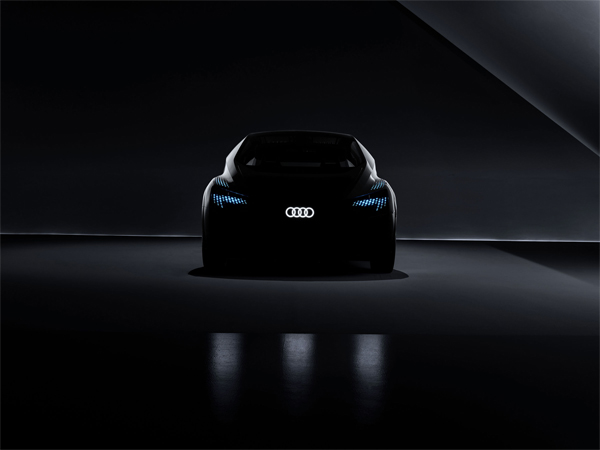
Luxurious refuge and high-tech control center: the interior
Audi AI fundamentally changes how automobiles are used and significantly enhances the time spent on board. The car is increasingly becoming a “third living space” alongside our homes and workplaces. It is thus only consistent that the Audi designers did not subordinate the interior of the Audi AI:ME to the shape of the body. On the contrary. They prioritized the interior and made it the core of the whole vehicle. The focus here is less on the traditional connection between driver and vehicle—steering wheel, instruments, pedals—and more on the time spent in the automated vehicle. This is why these control elements are retracted with an elegant and sophisticated choreography and are then almost fully concealed by a stowage compartment with a surface made of open-pore walnut wood.
In general: Stowage space will become more important than before in automated vehicles. The Audi AI:ME features large areas both on the cockpit cover and between the front seats that conceal a further innovative detail: Magnets serve as cup holders and hold metal cups or plates in place as required. Occupants can enjoy a relaxed meal while riding in the automated Audi AI:ME.
No matter what they are doing, the passengers can always find a comfortable seating position. The front seats are inspired by the classic lounge chair and feature a wide, comfortably cushioned seat, upholstered with textile material in warm shades of gray. The backrests are designed as curved shells that are attached to the seat cushion only with a vertical carrier. When the pedalry is not needed, drivers can rest their feet on the supports under the dashboard, such as on an ottoman. On the rear bench, which reaches around to the side sections of the car, occupants can vary their seating position almost any way they like.
The horizontal angle in the deep window in the interior is a significant element of the side section—a feature quoted from the Audi AIcon, so to speak. It offers an obvious ergonomic advantage to the occupants: It extends the range of motion of the arm resting on the door rail and also visually increases the size of the entire interior to a significant degree.
The vehicle and as the communication and interaction systems are operated by means of eye tracking, voice input, and touch-sensitive fields in the door rail. They are positioned perfectly in terms of ergonomics and are normally integrated into the surface, making them invisible. The lighting is activated only when approached, and guides the user’s gaze to the functional surfaces.
There is a multifunctional, three-dimensional OLED monitor that runs below and along the entire length of the windshield and is used primarily in dialogue with eye-tracking control. Terminologically coded function menus, for example for navigation or infotainment, can be activated with the eye and then open up further levels that move from the background into the sharp view mode on the 3D monitor.
There are VR goggles on board for the visual output of the infotainment system. They turn Internet use, watching movies, or even interactive gaming into a fascinating experience for the passengers. Audi demonstrated the possibilities that await us in the future with the Holoride system at the CES 2019 in Las Vegas. Here, the vehicle’s own movement is detected by a sensor system and then integrated interactively into the visual course of a game. Passengers feel like they are literally in the midst of the action.
The occupants experience the interior of the Audi AI:ME not simply as a means of transport, but as a luxurious atmosphere with numerous high-tech features. It also literally acts as a filter that keeps out the omnipresent traffic all around. The high-quality audio system is coupled with noise compensation that can completely suppress the outside noise level by means of active noise control. This allows occupants to enjoy meditative silence or listen to music in concert-hall quality in the Audi AI:ME.
Surfaces and structures that are familiar from the home environment dominate even in terms of the materials. High-quality textiles, some of which are made of recycled products, wood, and the touchpads in the door rails made of the mineral composite material Corian, which is particularly pleasant to touch, give the predominantly technical character of the vehicle a cozy and luxurious touch. The interior gets its special ambiance from the tension between the natural and technological elements. Large glass surfaces in the deep windows and the roof area make the interior light and transparent. Electro-chromatic control can insulate the entry of light and heat if necessary, and shield the interior with the continuously tintable windows. Filigree wooden struts in the roof area create a pergola above the interior.
The use of real plants in the interior of the automobile is a first. Vegetation, which is rarely found in the hostile city environment, gives occupants a feeling of proximity to nature and helps to objectively improve air quality in the automobile at the same time. Sophisticated filter technology prevents odors from traffic and the city from entering into the interior of the Audi AI:ME in the first place.
Systems that determine the stress levels for vital parameters also serve the wellbeing of the occupants. Intelligent algorithms allow the Audi AI:ME to get to know the driver better and better and improve their options in a specific manner.
A face in the crowd: the exterior
The Audi AI:ME is immediately recognizable even in the rearview mirror: Its face is characterized by the hexagonal Singleframe with the inverted shape and surface typical for an electric Audi. The architecture of the body is a newcomer to the pool of Audi shapes. If you look closer, though, the relation to the Audi AIcon concept car introduced in 2017 becomes apparent. Despite the completely different proportions, there are clear similarities in the precise graphics of the contours and the long arch of the roof line. But the main connection between the two different autonomous vehicles is the significant angle in the side windows.
The exterior differs strongly from the mainstream competition. The Audi AI:ME is a targeted alternative design. More than just a hint of a wedge shape, the accentuated and drawn out wheel wells that are typical for the brand and the striking window graphics create a highly emotional overall shape. The traffic area is clearly subordinate to the small space requirement: With an exterior length of 4.30 meters (14.1 ft) and a width of 1.90 meters (6.2 ft), the vehicle fits into the compact car segment. Its height of 1.52 meters (5 ft) offers great advantages in the interior in particular, and gives occupants a sense of ample space, makes it easy to get in, and offers excellent headroom. The large side doors that open in opposite directions and are fastened at the front and back also facilitate getting into the vehicle. And yet, the Audi AI:ME does not appear as a cubic van, but exudes dynamism even at a standstill. Large 23-inch wheels emphasize this appearance.
See and be seen—the lighting With the self-driving cars of the future, headlights will have a part-time job at best because the driver will be concerned with other things most of the time and will rarely need the road to be brightly illuminated. It is another function of the lighting that takes on a more important role here: communicating with other road users. The Audi AIcon already demonstrated how digital matrix luminous surfaces can use moving graphics to output clearly understandable signals relating to the driving condition and, of course, also to mark the vehicle itself.
The Audi AI:ME takes this approach one step further: As road users come even closer in the city, the traditional positions of the front and rear lights are often not visible. Because of this, Audi lighting designers integrated LED elements in the body in an unusually high position above the wheel wells, where they are visible from all angles. This 360-degree communication is an important additional safety feature for pedestrians or cyclists.
Like in the AIcon, the LED units at the front and the micro matrix projectors can use easily identifiable symbols to signal to pedestrians when the AI:ME is letting them cross the road, for example. The graphics can be projected onto the road or a wall. This function is also used to illuminate the door area to ensure that occupants can enter or exit the vehicle safely and also to mark the vehicle for other road users. The matrix projectors can also provide additional safety to other road users with weaker lighting by automatically illuminating their surroundings.
The Audi AI:ME features a further innovation: It can interpret signals from other vehicles and use its own lighting technology to amplify them if this benefits the surroundings. Example: A vehicle driving in front indicates danger with faint hazard warning flashers. The AI:ME can detect this signal and amplify it with projections and the LED units on the body so that it is clearly visible to all road users.
As a level 4 vehicle, the Audi AI:ME is equipped with bright LED headlights and perfectly visible brake and tail lights for all those situations in which drivers take the wheel themselves. When driving actively, being able to see is just as important by night as it is by day in the future, too.
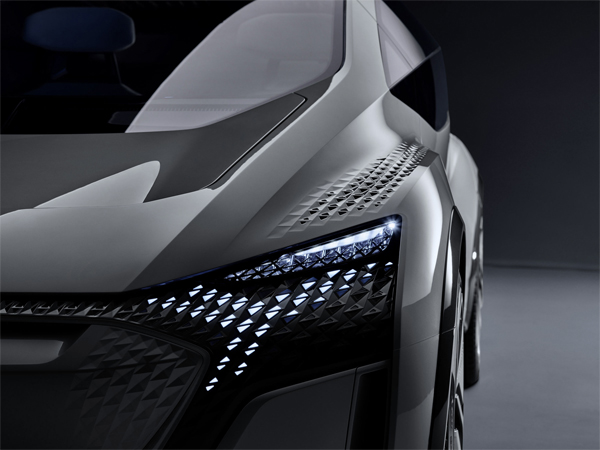
Mobile for hours: the drive architecture
Audi took a targeted approach to tailoring the specifications of the AI:ME to the scope of use of a city car. This means that extreme acceleration values and top highway speeds are just as obsolete as high cornering speeds and ranges that are suitable for driving long distances. An automobile like the AI:ME will drive predominantly in the speed range between 20 and 70 km/h (12.4 and 43.5 mph) and will often have to remain mobile for hours at a time without charging. However, long ranges in terms of kilometers are less relevant than the ability to make good use of the operating time.
The engineers therefore drew on a comparatively simple, yet light, basic configuration. A battery unit with a storage capacity of 65 kilowatt hours is sufficient for meeting these requirements. A permanently excited synchronous motor that can mobilize 125 kW (170 metric hp) if necessary operates in the area of the rear axle of the AI:ME. A fraction of this is usually sufficient for keeping up with the flow of city traffic. Thanks to brake energy recuperation and its comparatively low weight, the Audi AI:ME exhibits extremely low energy consumption even in city traffic.
The axles and other components of the suspension are found in the portfolio of compact sister models of the Audi portfolio. The tried and tested combination of adaptive dampers and small unsprung masses ensures good ride comfort in the city. The body is made of a light-weight multi-material compound consisting of high-tech steel, aluminum, and plastic components, particularly in the attachments.
Audi on request: innovative offer concepts
After the Audi AIcon, which debuted at the International Motor Show in 2017, and the radical Audi PB 18 sports car, which was introduced in the summer of 2018, the Audi AI:ME is now the brand’s third vision vehicle to present an offer for use in clearly defined areas (“use cases”). While the Audi AIcon offers the qualities of a business jet for long-distance drives, the PB 18 is a vehicle for the occasional trip to the race track. The Audi AI:ME is the perfect companion for use in conurbations. A fourth vision vehicle will complete the concept quartet at the International Motor Show in September 2019.
The top priority given in the specifications for these test mules is not to design an all-rounder for the versatile and long-term spectrum of use of a heterogeneous clientele. These are highly specialized premium automobiles that can be ordered as needed and with extensive possibilities for individualization as part of an on-demand offer. This approach is based on the requirement profile of many customers, especially in urban areas, which is undergoing a transition. Automobiles are to be available and ready for use upon request and should ideally be custom tailored, but they need not pass into permanent personal ownership. However, premium customers still demand that they can order their automobiles with as many individual features as possible—and, of course, with the same high quality they are used to and expect—from the Audi.
Customers who book a vehicle will then not only get their desired vehicle, but can also have it configured to suit their personal preferences as far as possible. The color, interiors, and technical options can be pre-configured online with the app or via the driver details stored in the “myAudi” system. Even drivers’ preferred interior temperature, the perfect ergonomical seat adjustment, and their personal music library are already activated when they get into the car.
This offer is accessible and easy to use via an app that connects the vehicle order, personal preferences of the user, and numerous options that can be used while driving. Users make use of this app to order their Audi AI:ME and can preorder the car with two or more seats, and even a child’s seat, as required. They will find the AI:ME at the requested time and in the agreed-upon place and can simply park it somewhere after using it. In zones with the appropriate equipment, the vehicle can even travel between the depot and the customer’s address without a driver.
The app, which is operated via a smartphone and in the car itself, also serves as an assistant and intermediary for many other services. For example, it can be used for spontaneous communication with friends via the Internet or social media. Users can take selfies on board and share them in social networks. They can access the entire Internet for the purposes of entertainment, research, and service. Users can order food on the way and make a quick, automated stop at a restaurant to have it delivered to the car, and then enjoy their meal in the vehicle on their way home.
The connection between the user’s home network and the Audi AI:ME even allows users to continue watching a movie using the VR goggles in the car, picking up where they left off at home. On their way home from work, they can close their eyes, enjoy the silence on board, and relax.
The Audi AI:ME becomes a fixed point in its user’s personal digital biotope. The tedious daily journey from A to B turns into an enjoyable ride with free time. After they have arrived at their destination, the users can get out of the car, relaxed and in good spirits, and do not even have to look for a parking spot or charging station. The Audi AI:ME will find its own way back to the depot.
“Audi on demand” is available in metropolises on several continents and is already the perfect example of the future expansion of Audi’s offer into a global mobility service provider. With the simultaneous expansion and specialization of the vehicle fleet, this program will become even more attractive to customers with high demands in the future. The premium vehicle offer itself and the digital integration of the automobile and living environment will give the Audi brand a head start in this segment, too: Vorsprung durch Technik.
Audi the overall winner in “Best Brands in All Classes”
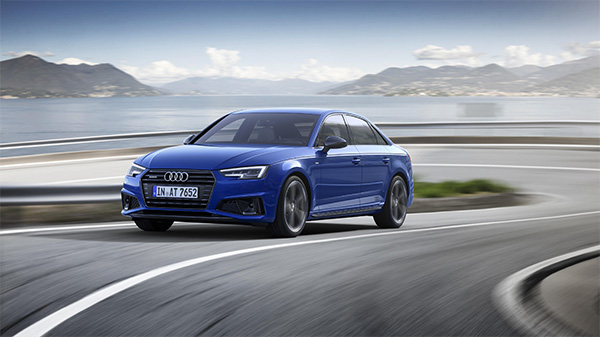
Audi the overall winner in “Best Brands in All Classes”
Audi is the big winner in the Auto Bild “Best Brands in All Classes” reader survey. The four rings won seven individual victories in the quality assessment – and easily took the overall win. Audi also placed first in the design and price/performance categories as well as in the “Reliable Cars” image field. No brand performed better in the core criteria of the image survey, in which over 70,000 readers participated.
Bild readers found that Audi does the best job in terms of quality, design and price/performance. Readers voted the four rings overall brand winner with 55.2 percent approval – ahead of Porsche and Skoda.
No other manufacturer enjoys more trust than Audi when it comes to quality. “We want to consistently delight customers with top quality in the premium segment,” says Michael Neumayer, Head of Audi Quality Assurance. “Auto Bild readers have emphatically confirmed that we have once again succeeded here.”
In the “Best Brands in All Classes” survey, readers of Auto Bild trade magazine rated 38 car brands in 14 vehicle categories. Quality, design and price/performance ratio are considered the core criteria here.
Audi topped the quality ranking in seven categories: compact, midsize, full-size and convertibles up to EUR 50,000, as well as all SUV categories – small, medium and large. The brand chalked up additional individual wins in design in the full-size category and in the price/performance category for convertibles over EUR 50,000. In addition, the “Reliable Cars” category went to the four rings across all classes. The brand thus achieved a total of ten first place finishes – an achievement that continued Audi’s strong finish in the “Best Brands” of 2018.
9000 engines and 700 cars are made at this Audi factory. Daily.

9000 engines and 700 cars are made at this Audi factory. Daily.
Audi Hungaria was founded in 1993 and started producing four-cylinder five-valve engines. In the following years automobile production was added in Győr in 1998, starting with the legendary Audi TT Coupe.
Today, the Hungarian Audi subsidiary produces up to 9,000 engines and 700 cars per day on an area of more than five million square meters. It also operates one of the largest toolmaking facilities in Central Europe.
Since 1993, Audi Hungaria has produced more than 34 million engines and approximately 1.21 million automobiles. A total of about 12,900 employees work at the Győr site. Through its service providers and suppliers, Audi Hungaria secures jobs for a total of more than 30,000 people in Hungary. This makes the company the biggest employer in the Hungarian automotive industry.
The company is preparing itself for the future and is consistently focusing on electrification and digitization: The production of electric motors started in Győr in July 2018. Audi Hungaria is thus expanding its range of drive systems with the addition of electric motors to the continuously improved gasoline and diesel engines and the engines running on compressed natural gas (CNG).

